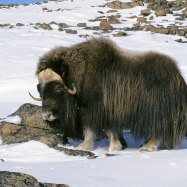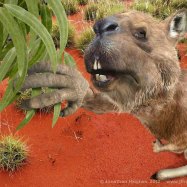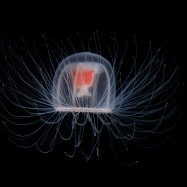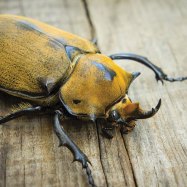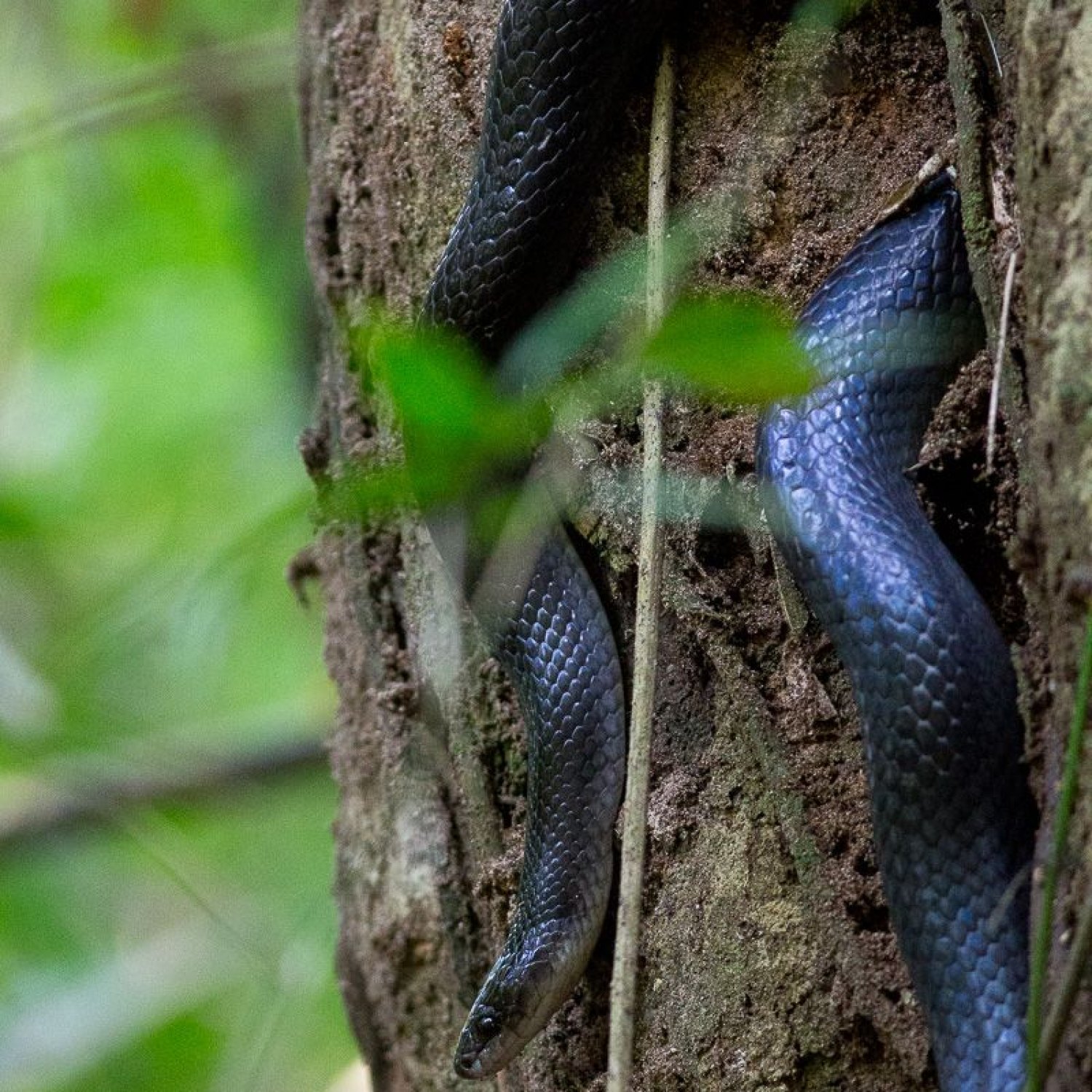
Mussurana Snake
Up to 5 feet
Meet the Mussurana snake! This fascinating creature, found in Central and South America, can grow up to 5 feet in length. Belonging to the Dipsadidae family, it has a slender and elongated body shape. Admire this animal's beauty, but keep a safe distance as it is a constrictor and feeds on small mammals and reptiles. #Mussurana #snake #CentralAmerica #SouthAmerica #nature
Animal Details Summary:
Common Name: Mussurana Snake
Kingdom: Animalia
Habitat: Tropical forests and savannas
Mussurana Snake: The Fascinating Serpent of South America
From the depths of the dense tropical forests of South America emerges a creature that has captured the curiosity of many nature enthusiasts - the Mussurana Snake. With its elegant and elongated body, it is no surprise that this serpent has become the subject of many myths and legends.A Creature of Intrigue and Mystery
The Mussurana snake, known in the scientific community as Clelia clelia, is a non-venomous colubrid species found in Central and South America. With its slender body that can reach up to five feet in length, this creature blends seamlessly into its natural habitat, making it a challenge to spot Mussurana Snake.But what truly makes the Mussurana a creature of intrigue and mystery is its feeding method. Unlike most snakes, this species has a unique diet - it feeds exclusively on other snakes. This carnivorous behavior has led to many fascinating tales about the Mussurana, making it a sought-after subject of research in the field of herpetology.
The Taxonomy of the Mussurana Snake
To gain a better understanding of the Mussurana snake, let us delve into its taxonomy. The kingdom of this serpent is Animalia, indicating its classification as an animal. It belongs to the phylum of Chordata, indicating its possession of a spinal cord. Like all other snakes, the Mussurana falls under the class of Reptilia, distinguishable by its cold-blooded nature and scaly skin.As for its order, the Mussurana snake belongs to Squamata, which comprises all scaled reptiles, including snakes and lizards. It is a member of the family Dipsadidae, a diverse group of non-venomous snakes found primarily in Central and South America Macaw.
The Habitat and Distribution of the Mussurana Snake
The Mussurana snake is a species that is native to South America, particularly Brazil, and is found in abundance in Central and South American countries such as Venezuela, Colombia, and Peru. This snake is highly adaptable, and thus, its habitat includes a variety of ecosystems, ranging from dense rainforests and savannas to grasslands and open agricultural fields.As a general rule, you are most likely to find the Mussurana snake in habitats with a steady supply of rodents and lizards, which are its primary food sources.
The Fascinating Physical Characteristics of the Mussurana
The Mussurana snake is easily recognizable by its characteristic blackish-brown coloration, combined with a yellow or white ventral coloration. This coloration acts as camouflage, helping the snake to blend into its surroundings and stay protected from predators. Additionally, a distinctive feature of the Mussurana is its elongated and slender body, which allows it to move quickly through its natural habitat.While the overall length of this serpent can reach up to five feet, it is also known to have a relatively thin girth, with a body diameter of only one or two inches.
The Mussurana - A Carnivorous Predator
As mentioned earlier, the Mussurana snake is a carnivorous species that feeds exclusively on other snakes. Its diet includes a variety of snake species, including venomous snakes like the coral snake. This unique feeding behavior has contributed significantly to the Mussurana's survival in the wild and has led to some remarkable adaptations.For instance, the Mussurana snake is immune to the toxins of venomous snakes, making it an unbothered predator. Additionally, its specialized teeth and jaw structure allow it to swallow prey much larger than its own head, giving it an edge over its prey.
The Role of the Mussurana in the Ecosystem
The Mussurana snake plays a vital role in balancing the ecosystem in which it inhabits. With its diet consisting of mainly other snakes, it helps regulate the population of these species and prevent overpopulation. This, in turn, benefits other animal species lower in the food chain that may also be preyed upon by the snakes the Mussurana feeds on.Therefore, the Mussurana snake is a crucial component of maintaining the delicate balance of its natural habitat.
The Significance of the Mussurana in South American Culture
Apart from being a fascinating creature from a scientific perspective, the Mussurana snake also holds cultural significance in South America. In countries like Brazil, it is considered a symbol of good luck and is believed to bring blessings to its observer. For this reason, it is often kept as a pet in Brazilian households, where it is treated with respect and revered as a lucky charm.Furthermore, the Mussurana has appeared in local folklore and legends, adding to its mystical and enigmatic aura.
The Threats Faced by the Mussurana Snake
Despite its significant role in its ecosystem and cultural significance, the Mussurana snake is not immune to threats. Its natural habitat is rapidly shrinking due to human development and deforestation, putting its population at risk. Furthermore, its unique feeding behavior makes it vulnerable to accidental ingestion of toxic chemicals and pesticides, which can have severe consequences on its health.To protect this species and ensure its continued existence, conservation efforts must be put into place to preserve its natural habitat and protect it from potential threats.
In Conclusion
The Mussurana snake, with its fascinating characteristics and unique feeding behavior, is undoubtedly a creature worth admiring. From its elusive nature to its cultural significance, this species has captured the interest of many and continues to intrigue and fascinate us to this day.As we continue to expand our knowledge and understanding of this serpent, let us also strive to protect and conserve its habitat to ensure its survival for future generations to come.

Mussurana Snake
Animal Details Mussurana Snake - Scientific Name: Clelia clelia
- Category: Animals M
- Scientific Name: Clelia clelia
- Common Name: Mussurana Snake
- Kingdom: Animalia
- Phylum: Chordata
- Class: Reptilia
- Order: Squamata
- Family: Dipsadidae
- Habitat: Tropical forests and savannas
- Feeding Method: Carnivorous
- Geographical Distribution: South America
- Country of Origin: Brazil
- Location: Central and South America
- Animal Coloration: Blackish-brown with a characteristic yellow or white ventral coloration
- Body Shape: Slender and elongated
- Length: Up to 5 feet
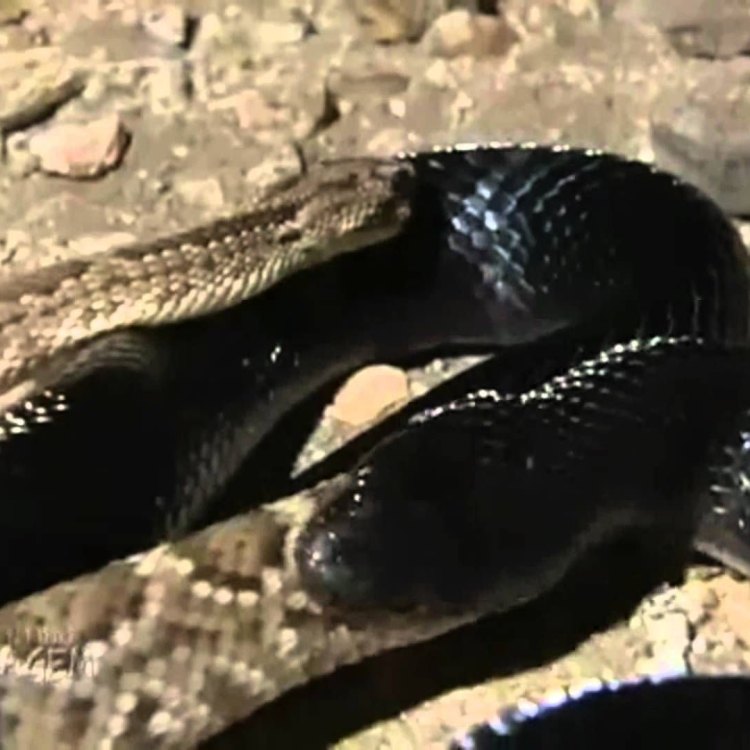
Mussurana Snake
- Adult Size: Large
- Average Lifespan: 10-15 years
- Reproduction: Oviparous
- Reproductive Behavior: Mating occurs in the rainy season
- Sound or Call: Not known for making vocalizations
- Migration Pattern: Non-migratory
- Social Groups: Solitary
- Behavior: Nocturnal and secretive
- Threats: Habitat loss and fragmentation, roadkill
- Conservation Status: Least Concern
- Impact on Ecosystem: Controls populations of small mammals and reptiles
- Human Use: Not used by humans
- Distinctive Features: Smooth, scaleless skin on the head, large eyes, and long, slender body
- Interesting Facts: Mussurana snakes are immune to the venom of other snakes and are known to eat venomous snakes
- Predator: Birds of prey, larger snakes
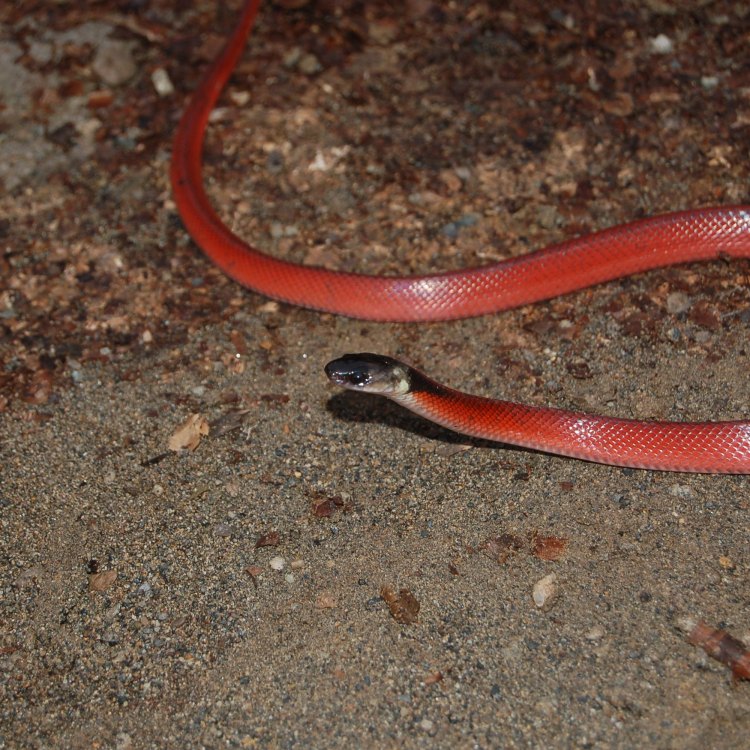
Clelia clelia
The Fascinating Mussurana Snake: A Master of Survival and Mystery
The animal kingdom is full of extraordinary creatures that have evolved to survive in different environments. While some are known for their strength or speed, others rely on stealth and adaptability. One such unique animal is the Mussurana snake.With its smooth scaleless head, long slender body, and large eyes, the Mussurana snake is truly a marvel of nature PeaceOfAnimals.Com. It is a non-venomous constrictor that can be found in various parts of South and Central America. Despite its fascinating qualities, this snake remains a mysterious and elusive creature to many. In this article, we will delve into the world of the Mussurana snake and uncover its distinctive features, behavior, and impact on the ecosystem.
Large Size and Long Lifespan
The Mussurana snake is a large species, with an average adult size of 5-6 feet in length. It can even grow up to 8 feet long in some cases, making it one of the largest snakes in its native regions. This size is partly due to the snake's diet, as it often consumes large prey such as rodents, lizards, and other snakes.
Another remarkable aspect of the Mussurana snake is its lifespan, which can range from 10-15 years in the wild. This is longer than many other snake species, making it a long-term resident in its ecosystem. However, the exact lifespan of the snake is not known as it is a secretive and elusive species, making it challenging to study in the wild Mulga Snake.
Oviparous Reproduction and Rainy Season Mating
Unlike some other snake species, the Mussurana snake is oviparous, meaning it lays eggs rather than giving birth to live young. A female snake can lay up to 15 eggs at a time, which she will then incubate for about two months before they hatch. The hatchlings are born fully developed, and they are independent from the moment they are born.
Mating in the Mussurana snake occurs during the rainy season, which varies depending on the region it lives in. During this time, male snakes will compete for female attention, often through ritualistic movements and displays of strength. Once the eggs are fertilized, the female will go off to lay them in a safe and warm environment.
Non-Migratory and Solitary Social Groups
Mussurana snakes are non-migratory, meaning they do not travel long distances to find a suitable home or breeding grounds. They are usually found in tropical regions, including forests, grasslands, and even human settlements. However, they tend to stay within a specific range, making them a relatively stable presence in their habitat.
Furthermore, Mussurana snakes are solitary animals, meaning they do not live or hunt in groups. They prefer to be alone and are highly territorial, only tolerating the presence of other snakes during mating or when they are young. This solitary behavior is believed to be a survival mechanism as it allows them to avoid conflict and competition.
Nocturnal and Secretive Behavior
The Mussurana snake is a nocturnal creature that is most active at night. This is because the cooler temperatures and the cover of darkness provide optimal conditions for the snake to hunt and move around without being noticed. They have evolved to be highly secretive and elusive, making them challenging to spot in the wild.
The smooth, scaleless skin on the head and its large eyes allow the snake to easily maneuver through narrow crevices and burrows to hunt for prey. Its slender body also makes it adept at squeezing into tight spaces to catch its victims. Additionally, its nocturnal behavior allows it to avoid competition with diurnal predators and prey, giving it a survival advantage.
Threats and Conservation Status
Despite being a large and formidable snake, the Mussurana is facing threats in its natural habitat. Habitat loss and fragmentation due to human activities, such as deforestation and urban development, pose a significant threat to its survival. As a result, the IUCN Red List has classified the Mussurana snake as a species of Least Concern.
The snake is also at risk of being killed by road traffic, as they often cross roads in search of prey or mates. Due to their secretive nature, they are also victims of illegal pet trade and are sometimes killed by humans out of fear or misconception. To ensure the survival of this unique species, it is essential to educate people about its behavior and the importance of preserving its natural habitat.
Impact on the Ecosystem
As with any other species, the Mussurana snake plays a crucial role in balancing its ecosystem. Its diet consists mainly of small mammals and reptiles, including rodents, lizards, and even other snakes. By controlling their populations, the Mussurana snake helps maintain a healthy balance in the ecosystem.
Additionally, the snake is immune to the venom of other snakes and is known to eat venomous snakes, including highly toxic species such as the coral snake and the fer-de-lance. This makes them a vital part of the natural control of potentially harmful species. Without the Mussurana snake, the ecosystem would be at risk of a population explosion of venomous snakes, which could have dire consequences for other species and human populations.
Interesting Facts and Mysterious Qualities
The Mussurana snake is not only impressive in size and behavior, but it also has some unique and interesting qualities that make it stand out among its peers. As mentioned earlier, this snake is immune to the venom of other snakes, making it a fearless predator that can prey on venomous snakes without fear of being harmed.
Furthermore, the Mussurana snake is not known for making vocalizations or calls. While some snake species use hissing or rattling sounds for defense or communication, the Mussurana relies on its other senses and behavior to survive. This adds to its mysterious and elusive nature, making it even more intriguing to scientists and nature enthusiasts.
Predators and Human Use
The Mussurana snake may be immune to the venom of other snakes, but it is not invincible. Larger predators such as birds of prey or larger snakes can pose a threat to the Mussurana. These predators rely on their strength and size to overpower the snake and make it a part of their diet.
Despite its impressive qualities, the Mussurana snake is not used by humans in any significant way. It is not bred in captivity, nor is it used for its skin or meat. However, the snake plays a critical role in traditional medicine in some cultures, where it is believed to have healing properties. Fortunately, with its non-aggressive behavior towards humans, the Mussurana snake rarely comes into contact with us, making it a safe neighbor to have in its native habitats.
In conclusion, the Mussurana snake is a fascinating and enigmatic creature that has evolved to thrive in its natural habitat. Its large size, long lifespan, and unique characteristics make it a favorite among reptile lovers and researchers alike. However, threats such as habitat loss and fragmentation pose risks to its survival, highlighting the need for conservation efforts to protect this remarkable species. By understanding and appreciating the Mussurana snake's role in its ecosystem, we can ensure a harmonious coexistence with this master of survival and mystery.
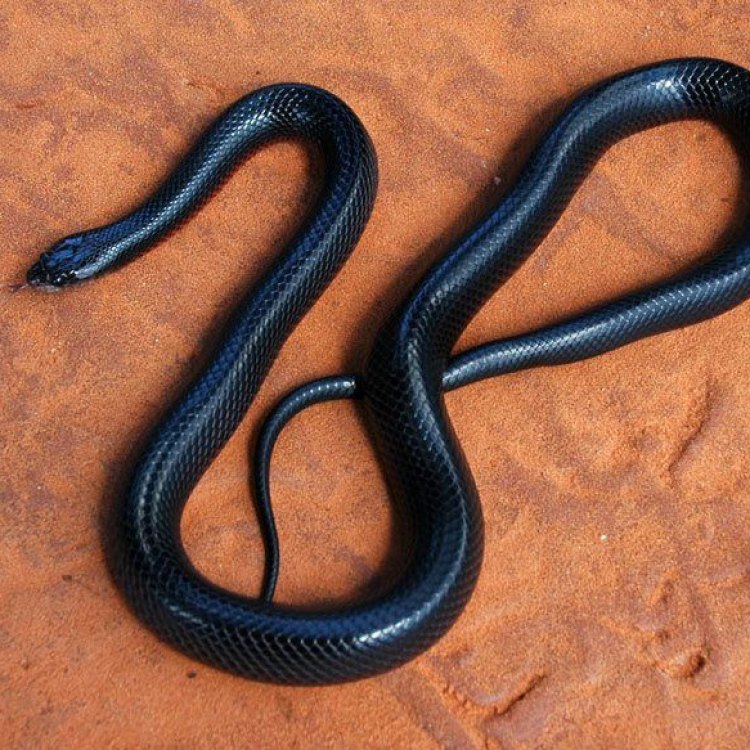
Mussurana Snake: The Fascinating Serpent of South America
Disclaimer: The content provided is for informational purposes only. We cannot guarantee the accuracy of the information on this page 100%. All information provided here may change without prior notice.







